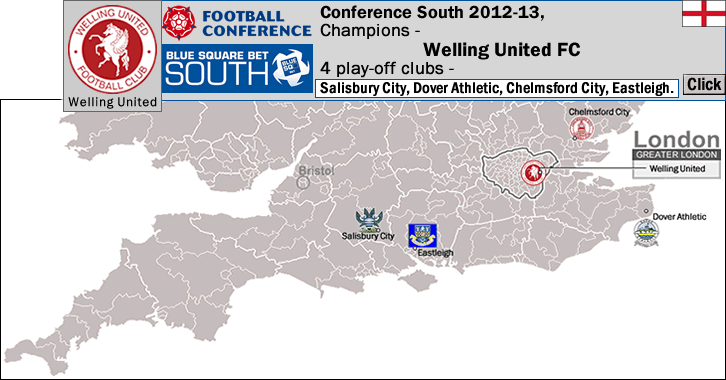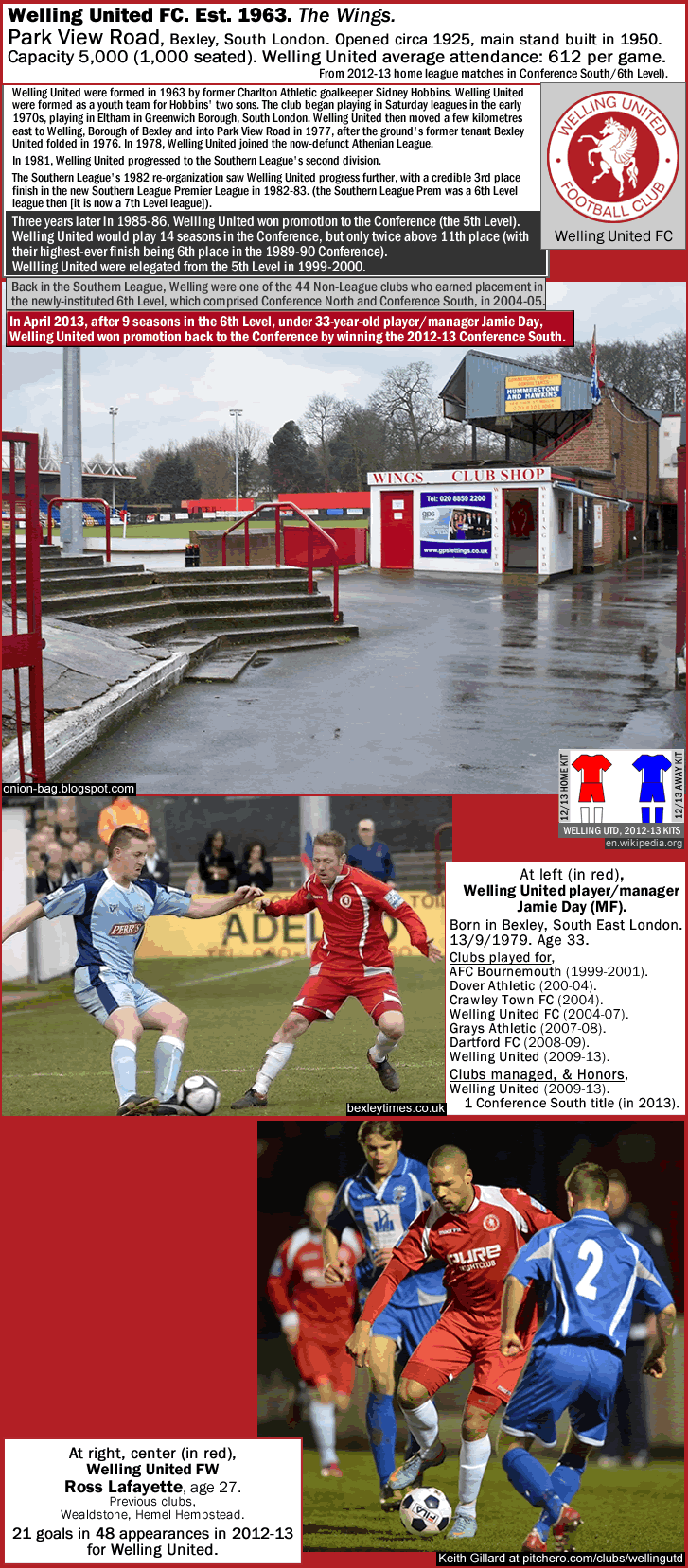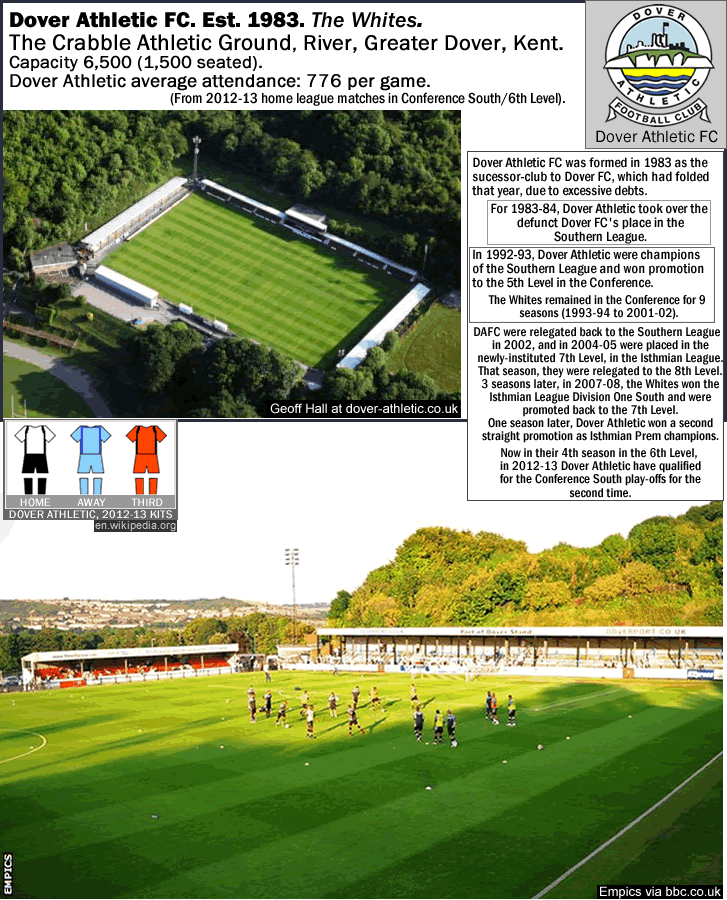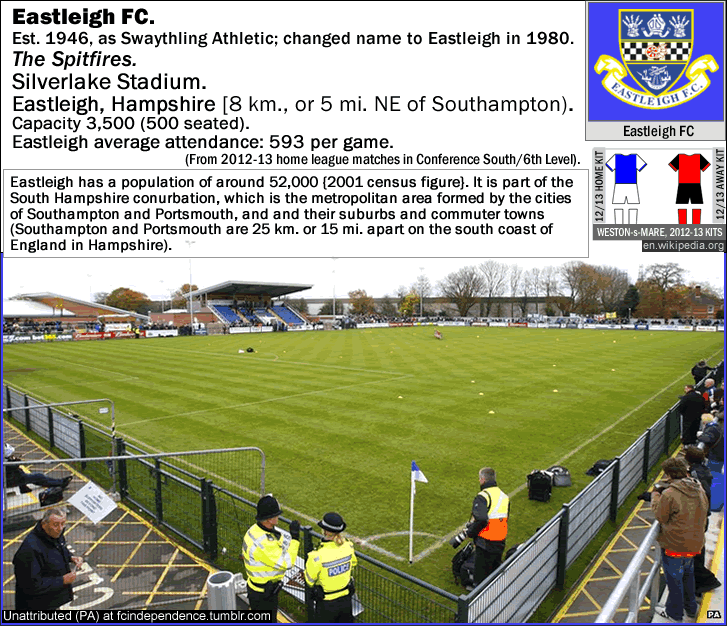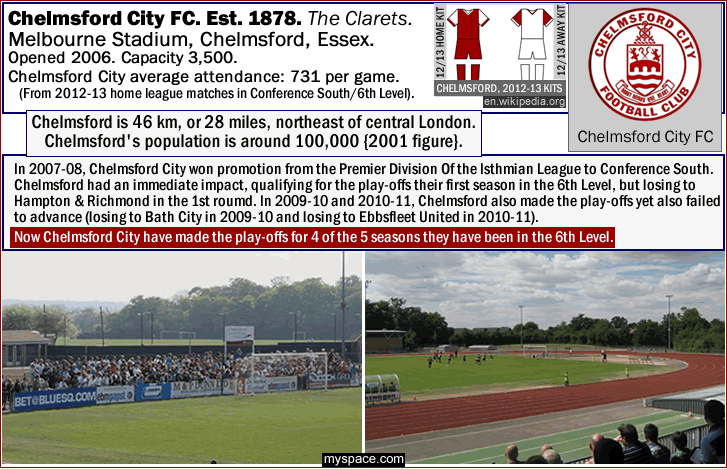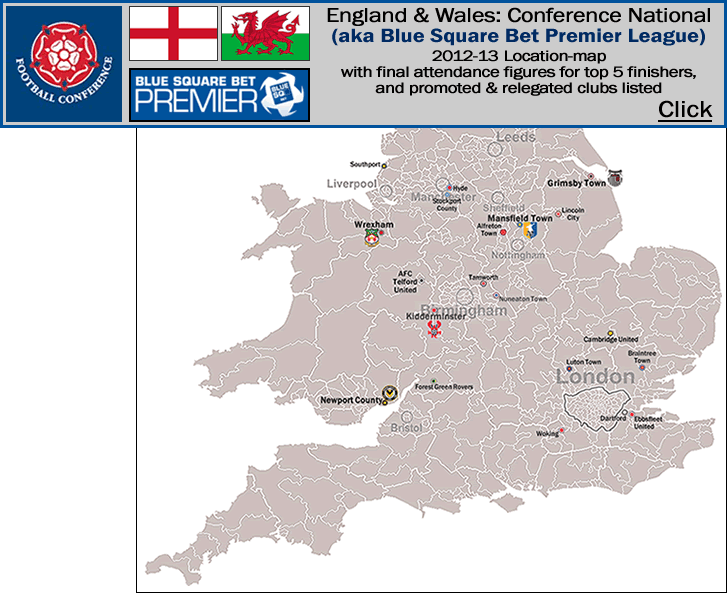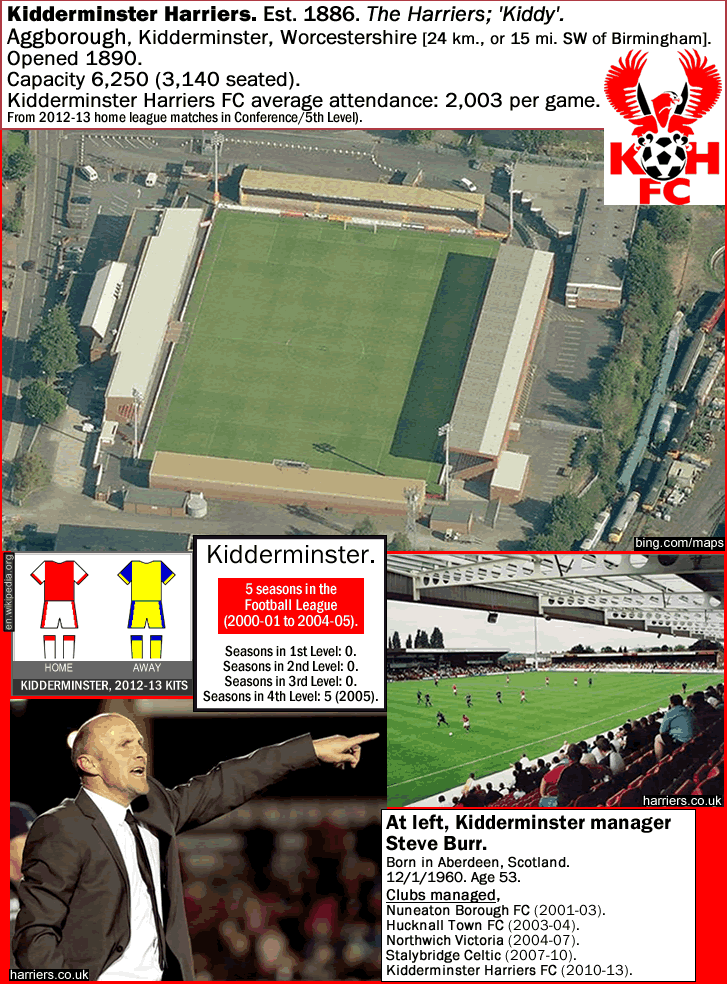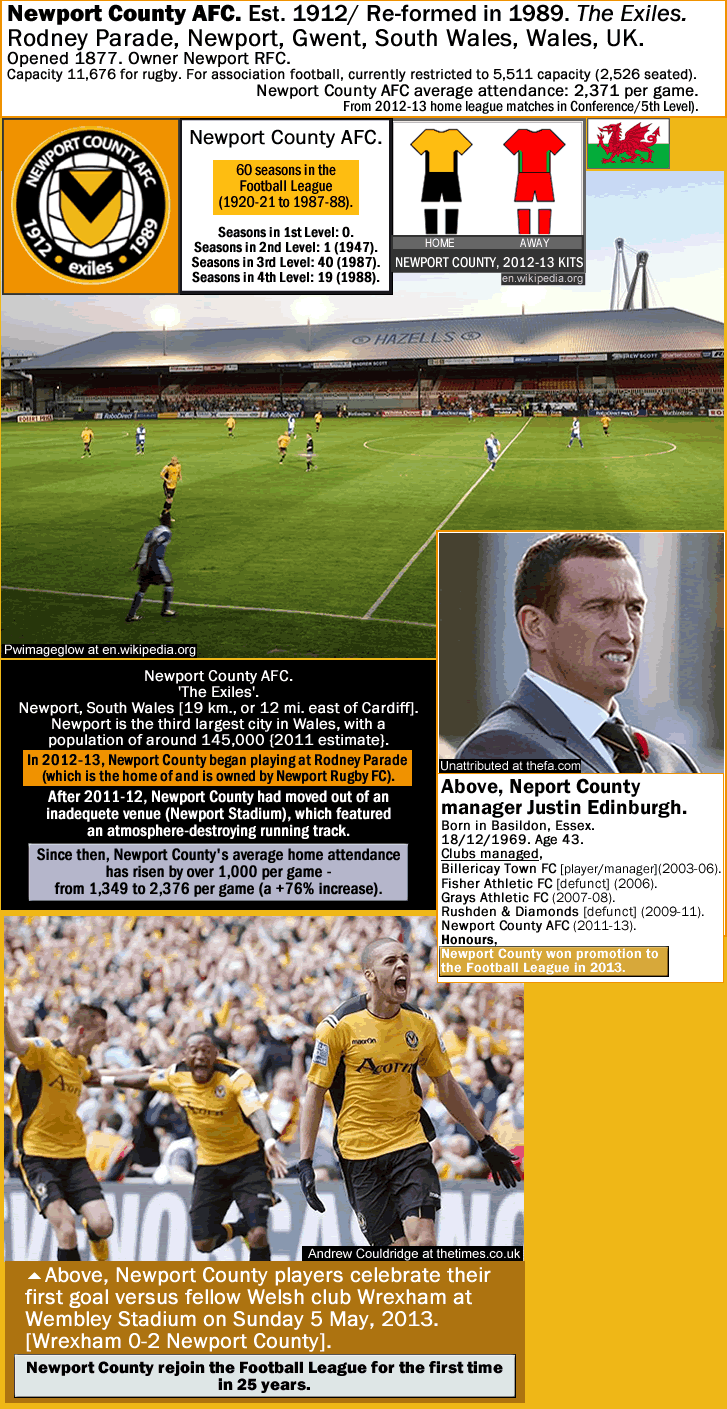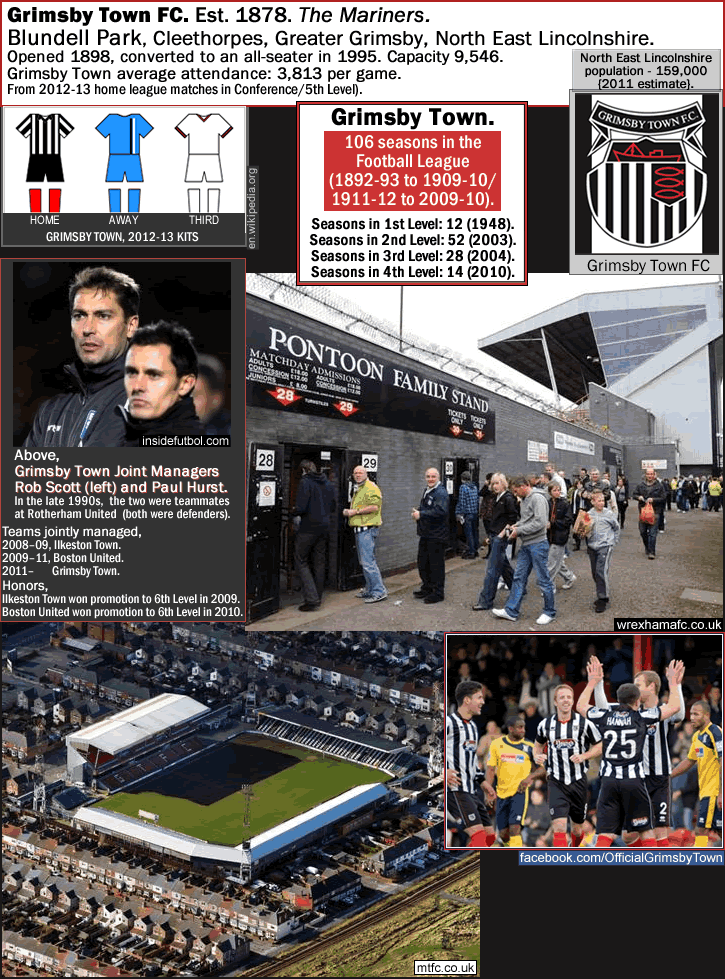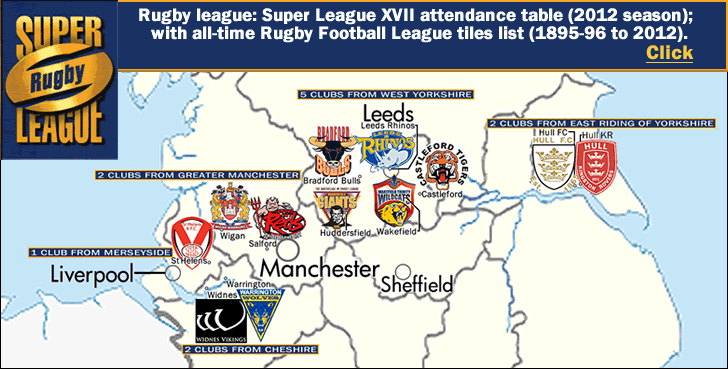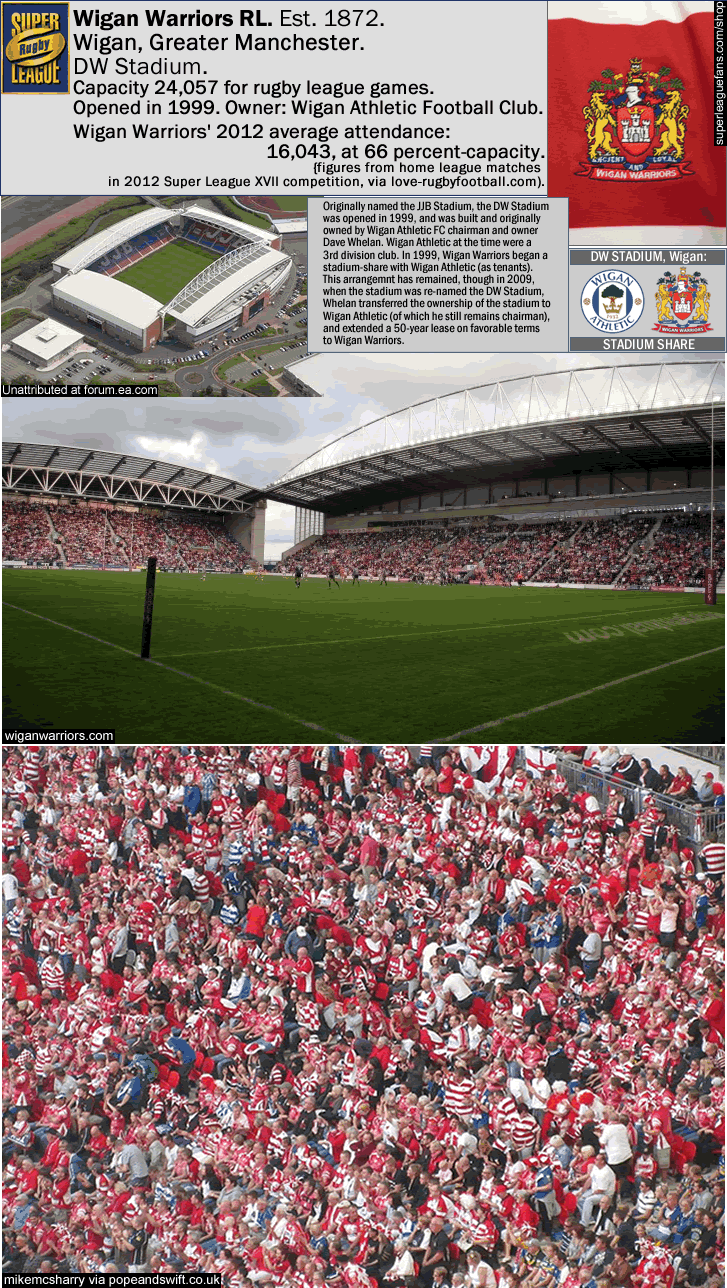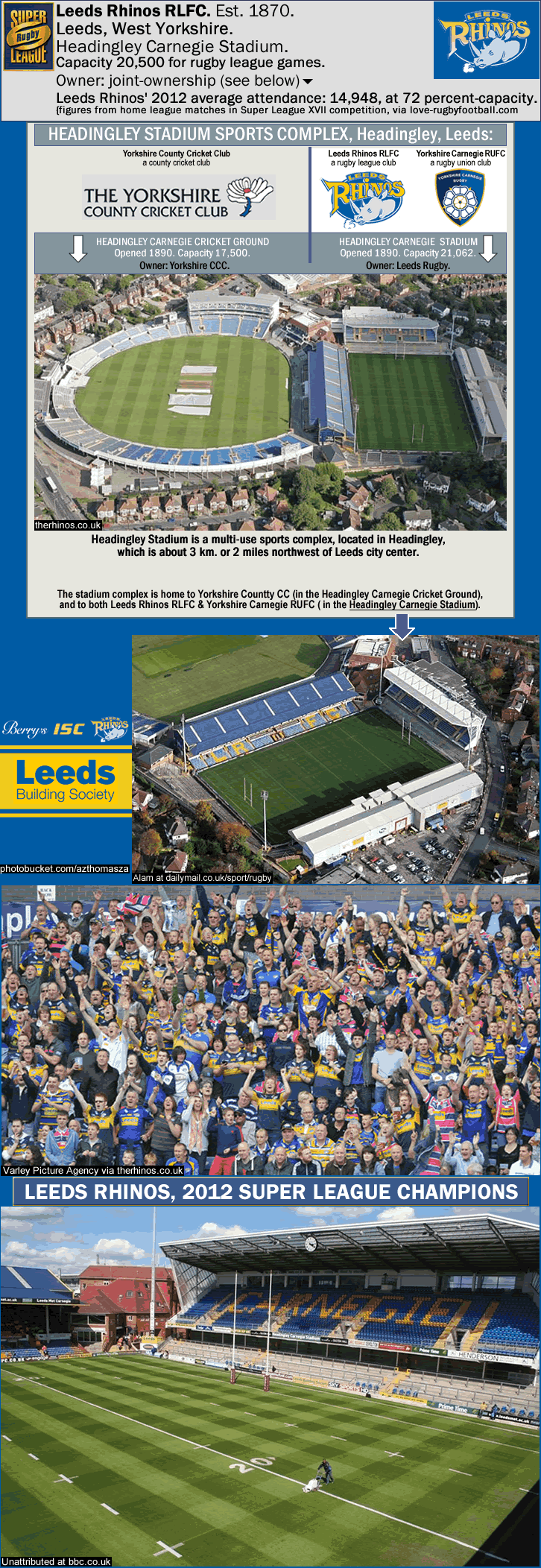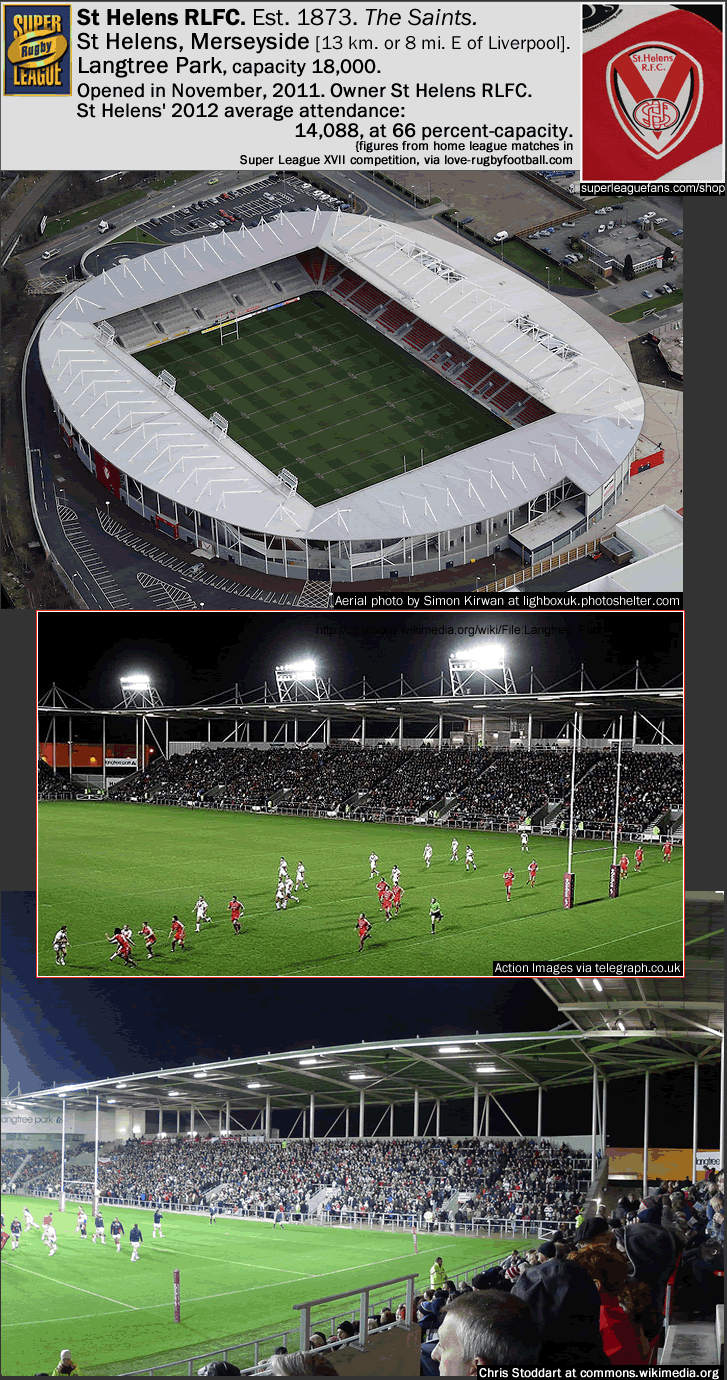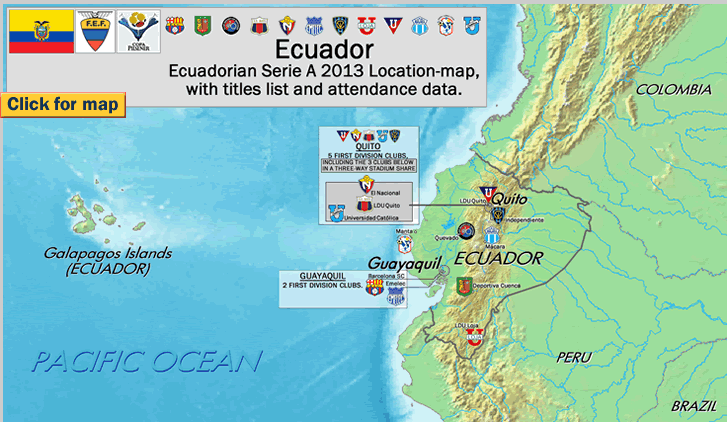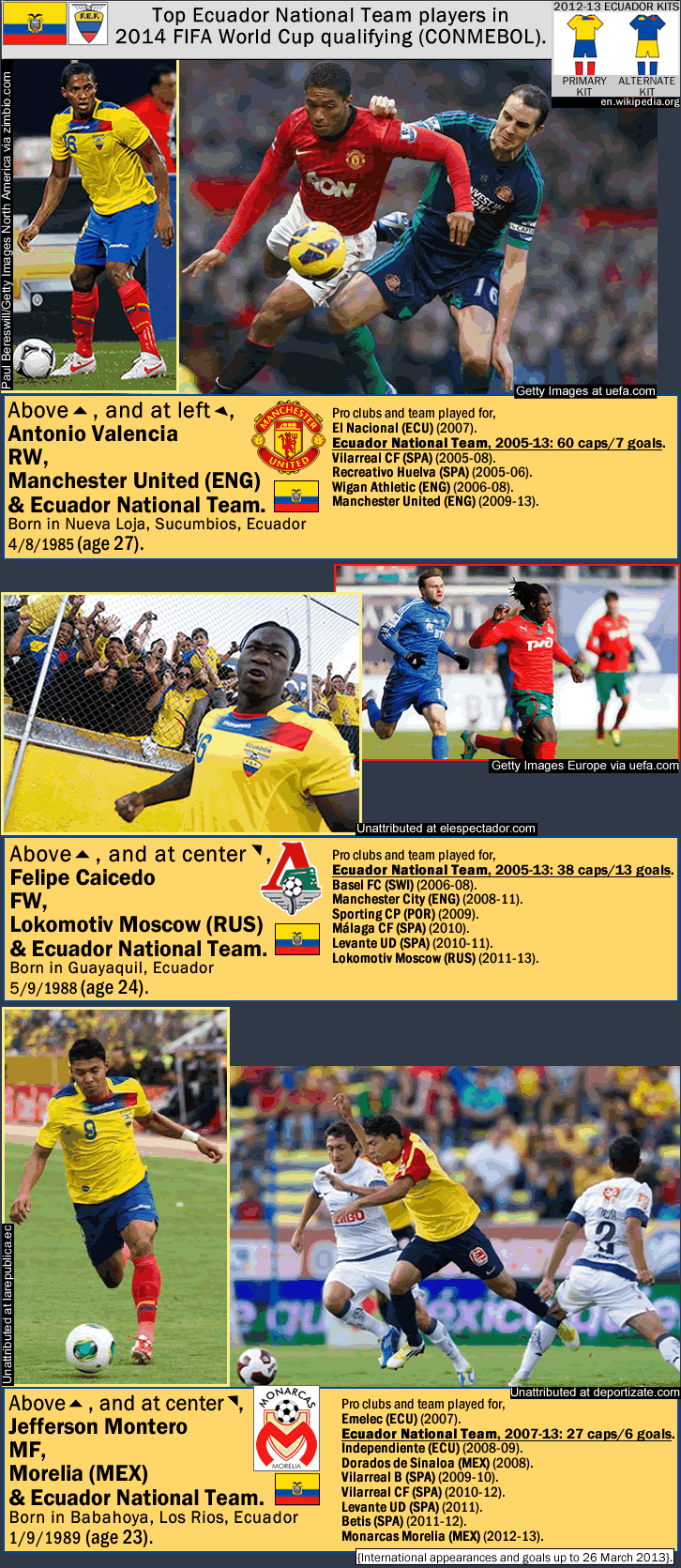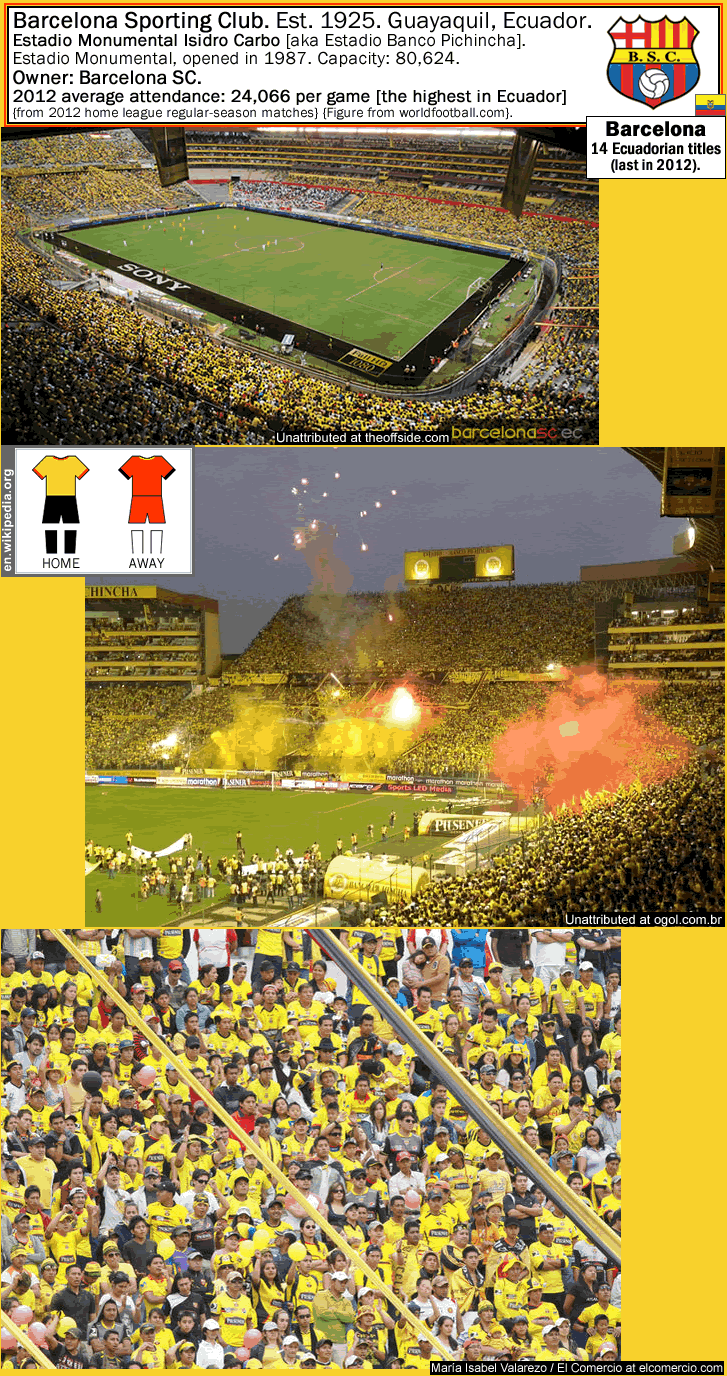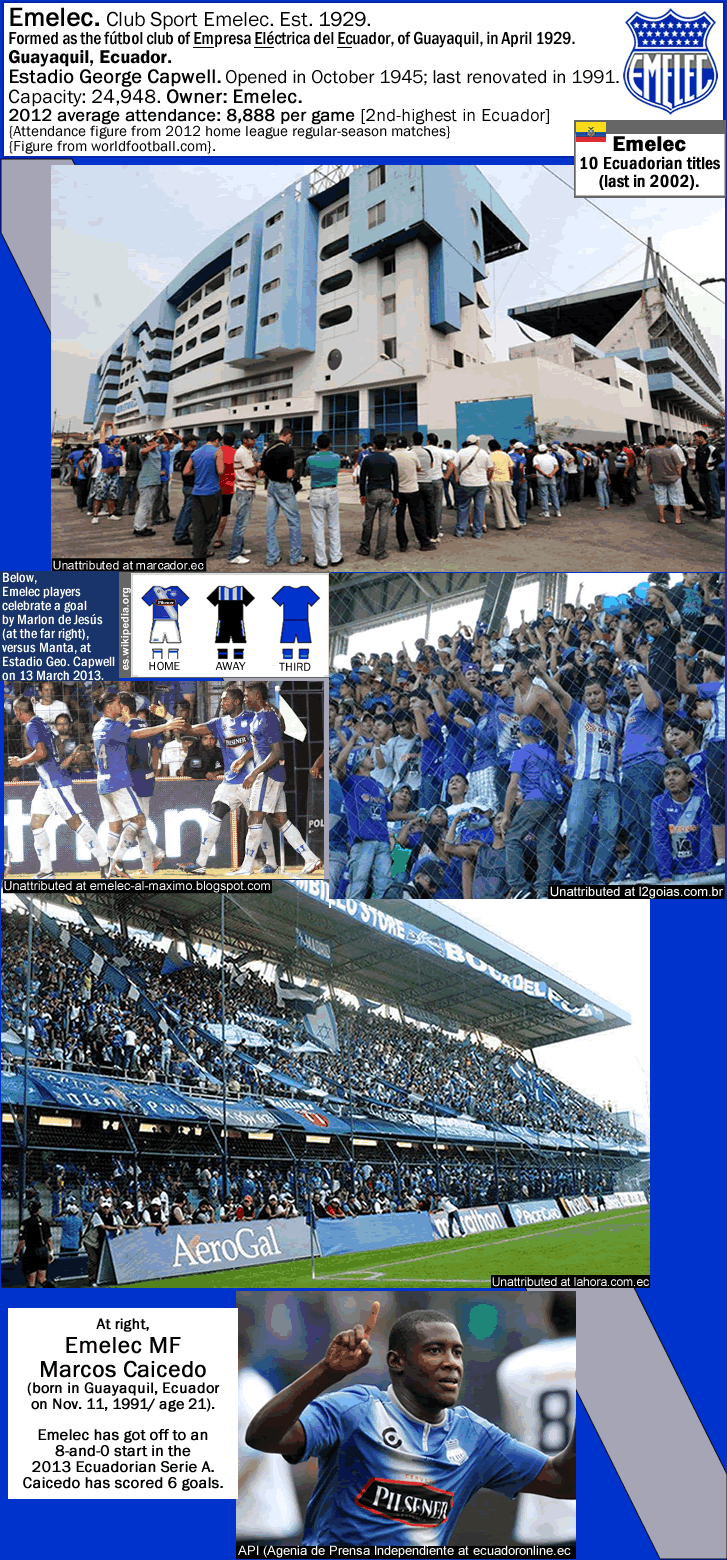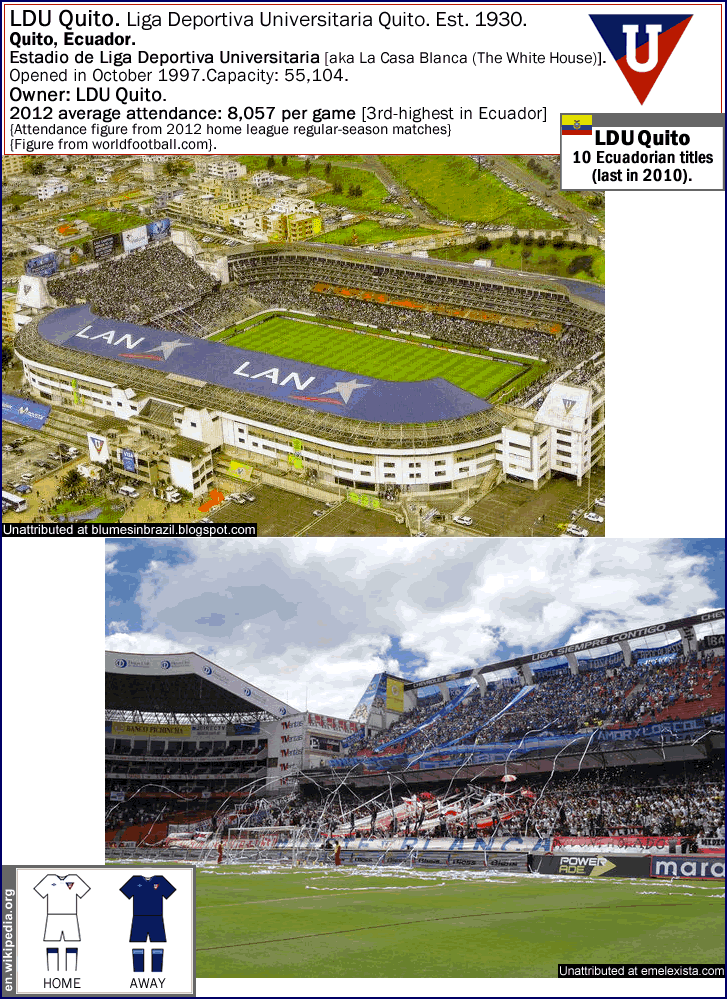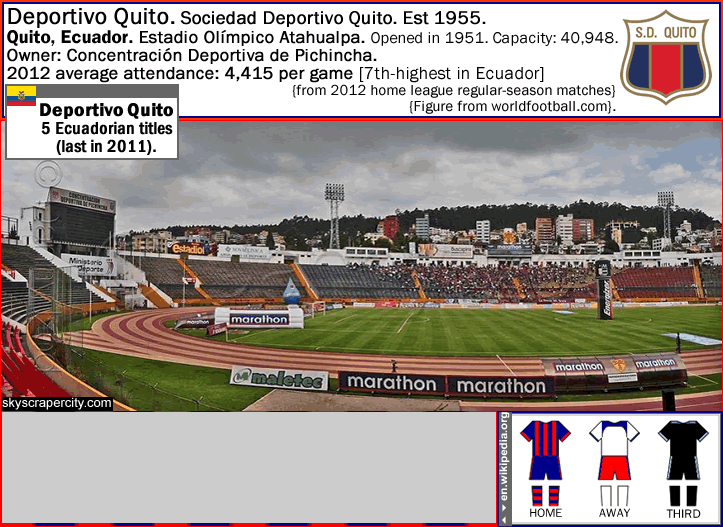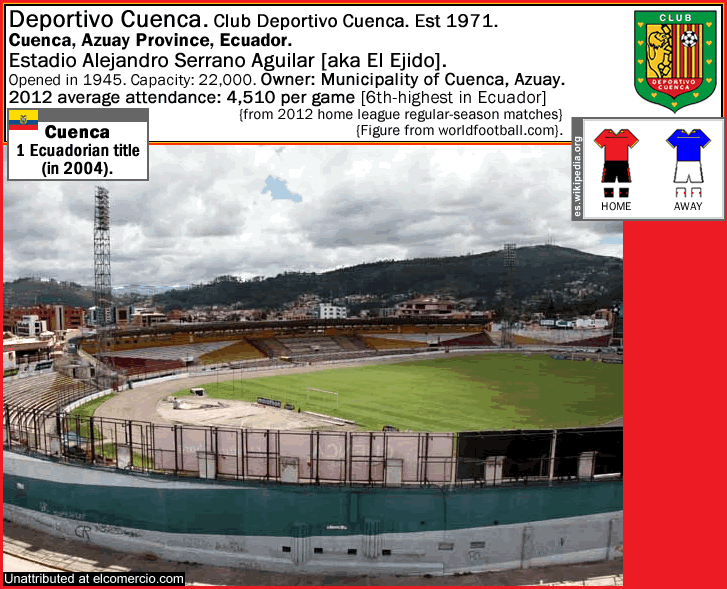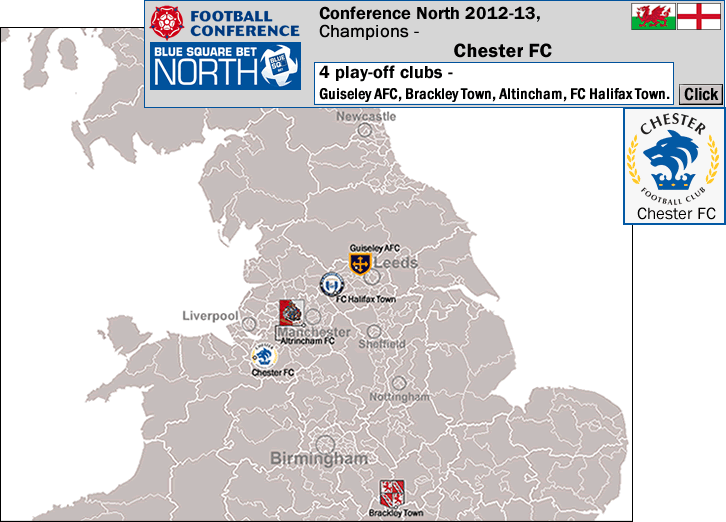
England: Conference North, map with 2013 champions Chester FC, and the 4 play-off clubs.
…
…
2012-13 Conference North & Conference South Play-offs – Fixtures, Results (soccerway.com).
…
The Conference North is one of 3 leagues in the Non-League Football Conference. It is a 6th Level league, and its sister league is the Conference South. Both were instituted in 2004-05. The 22-team Conference North and the 22-team Conference South are the highest regional leagues in the English football pyramid – promotion is to the 5th level and the Conference National (which is the lowest-level national league in the English football ladder, and the highest level in the Non-League pyramid). 2 clubs each from Conference North and from Conference South are promoted each season – one automatic promotion (1st place) and the play-offs winner. The play-offs are comprised of the 4 clubs which finished in 2nd, 3rd, 4th, and 5th places. The play-offs final in both Conference North and Conference South are played at the ground of the finalists with the better regular-season finishes.
This post features a location-map with attendance data for 5 clubs… the 1 promoted club from Conference North this season – Chester FC, and the 4 play-off clubs – Guisely AFC, Brackley Town FC, Altrincham FC, and FC Halifax Town. Also featured are captioned illustrations of the 5 clubs’ grounds, which include League histories for the 2 re-born Phoenix clubs (Chester and Halifax).
…
-
Promoted to Conference National for 2013-14 – Chester FC.
Since forming in 2010 as a Phoenix-club, Chester FC, a wholly supporter-owned club, have won 3 straight promotions, and will now play in the Conference National (5th Level) in 2013-14. The club is on a definite trajectory back to the Football League, where the club it succeeded, Chester City FC (defunct in 2010) spent 69 seasons (last in 2008-09).
Chester FC are from Chester, which is in the western part of Cheshire, about 25 km. (15 miles) south of Liverpool and right on the Welsh border. Chester FC were formed in May 2010, immediately after Chester City FC were liquidated. Subsequently, in the three years that have followed, Chester FC became the highest-drawing Non-League club outside of the Conference National, pulling in around 2,400 to 2,700 per game. Now in August 2013 Chester FC will join the Conference National, making it 3 straight promotions for the 3-year-old club. So the trend of ‘how hard it is to get out of the Conference and back into the Football League’ looks to be getting a new wrinkle. Now, somewhat big clubs (for 5th Level standards) are not only dropping down into the Conference (such as Luton Town and Grimsby Town and Stockport County and Lincoln City and Cambridge United; as well as recent Non-League escapees such as Oxford United and York City and Mansfield Town [among others]), but now, sizable clubs (most of whom are re-born Phoenix-clubs) are getting promoted up into the Conference – such as in the recent past the re-born Phoenix-club AFC Wimbledon, and now Chester FC, and soon, probably, FC Halifax Town (plus there’s also another club that fits into this category, Boston United; plus, Stockport County and Lincon City [both of whom are now stuck in the Conference North/South after being relegated this season] also fit this category). This trend, in my opinion, is just one more reason why the Conference National is so interesting to follow these days. It is literally getting bigger by the inevitable inclusion of sizable clubs coming into the 5th Level from both directions these days.
The following article gets into a detailed breakdown of all the recently promoted and recently relegated clubs between the Conference and the Football League … from The Two Unfortunates site, from 20 March, 2013, by Gary Andrews, ‘RELEGATION FROM THE FOOTBALL LEAGUE IS NOT THE END OF THE WORLD‘ (thetwounfortunates.com).
…
Chester FC are managed by Neil Young, a 38-year-old who is Birkenhead-based. Prior to his being re-signed as full-time manager in late 2012, Young also worked for Merseyrail (the commuter-rail network based in Liverpool) as a manager. As the Chester Chronicle has described him, Neil Young is ‘a fully paid-up member of the Liverpool pass-and-move school’ {see this interview of Neil Young by Paul Wheelock, ‘Chester FC: The Chronicle interview with new Blues boss Neil Young‘ from May 2010 (chesterchronicle.co.uk)}.
Neil Young had started as a midfielder in the Tranmere Rovers set-up but was forced to retire in 1999 at age 24 while at Droylsden FC. Entering the coaching profession, Young got his first job as manager in Sept. 2008 with English-league-affiliated-Welsh club Colwyn Bay FC (of Colwyn Bay, North Wales), who were in the 8th Level Northern Premier League Division One North at the time [Colwyn Bay have since risen 2 levels higher, and have been a Conference North side since 2011-12, and just avoided relegation in 2012-13 by winning their last 6 matches and finishing in 18th place].
Young’s first year at the helm saw Colwyn Bay make the play-offs but fall short. The following season (2009-10), Young’s Colwyn Bay made the play-offs for the second straight time, and beat Curzon Ashton and Lancaster City to secure promotion to the 7th Level Northern Premier League. At this point (Spring of 2010), the brand-new Chester FC approached Young to become the first manager of the club, whom were at that point slated to begin in the 9th Level. In May 2010, Young signed a contract to manage Chester FC. Chester FC then successfully appealed to the Football Association with regards to their initial league placement – and their appeal was successful and the new club were placed one level higher – in the same level and same league that Young had just gotten Colwyn Bay out of – the 8th Level Northern Premier League Division One North. For the newly re-formed club, that ‘upgrade’ in 2010 on the initial level & league placement was only logical, because it has become plain to see in the subsequent 3 years that Chester FC has inherited most if not all of the original Chester City fan base. Chester FC has been drawing crowds which dwarf the 8th and 7th Levels – like over 1,500-per-game higher than the usual crowds in the Evo-Stick leagues. At their compact and tidy and all-roofed Deva Stadium (which opened in 1992 and has a capacity of 5,300 [4,500 seated]), Chester FC draw in the mid-2,000-per game range (2,582 per game in 2012-13 {home league matches}), while the Northern League’s top division [7th Level] is comprised of clubs who usually draw in the 200 to 500 per game range (with around 330 per game as the median); while the Northern Premier League Division One North [8th Level] is comprised of clubs who usually draw in the 100 to 300 per game range (with around 160 per game as the median) {see this site for data I used in this sentence (nonleague.co.uk/leagues)}.
12 months later, in late April 2011, for the second straight season, Neil Young got a club promoted from the Northern Premier League Division One North, as Chester FC squeaked past Skermersdale United on goal difference of 2 goals. 12 months later, now in the 7th Level 2011–12 Northern Premier League, Young’s Chester FC won promotion again – this time by a whopping 17 points (over Northwich Victoria [the Vics were later relegated that season for financial mismanagement]).
12 months later, now in the 6th Level 2012–13 Conference North, Young’s Chester FC have won promotion for the 3rd successive year – again by a wide margin as they finished 16 points ahead of Guiseley AFC. So Chester FC now progress to the highest level of Non-League football, the 5th Level Conference National. They will be among the five or six biggest clubs in the Conference National next season. I say that because if they can draw 2.5 K per game in the 6th Level, then Chester FC will probably be able to draw near to 3,000 per game in the Conference. And only 4 clubs in the Conference this past season [2012-13] drew above 3,000 per game, and one was relegated – Luton Town, Grimsby Town, Wrexham, and Stockport County drew above 3K per game in 2012-13, with Stockport County being relegated this season. As to the clubs being relegated from League Two into the Conference, both Aldershot Town and Barnet drew under 2.5K per game in 2012-13. Aldershot will almost certainly see a further drop off in crowds next season, while Barnet might see a bit of attendance increase despite relegation and their having to move out of their borough into the adjacent borough of Harrow – because Barnet will be moving into a new purpose-built stadium there, ‘The Hive Stadium‘ [provisional name]. The problem being that a significant portion of Barnet supporters have made it known they won’t be attending matches anymore because Barnet are no longer playing in the borough of Barnet.
…
Here is a thread from the When Saturday Comes forum that was supposed to be about the plight of south-England-based clubs that were stuck in the Conference North (such as Bishop’s Stortford) – but it turned into a discussion about Chester FC…’TOPIC: Defying Geography; Conference North 2012/13‘ (wsc.co.uk/forum); (wsc.co.uk).
From Borussiabeefburg.wordpress.com, from 12 Dec. 2012, ‘Deva Stadium‘.
…
Promoted to Conference National for 2013-14 – Chester FC.

Photo and Image credits above –
Photo, AltusImaging at panoramio.com.
Illustration of Chester FC 2012-13 kits from ‘Chester FC‘ (en.wikipedia.org).
Photo of Chester manager Neil Young from chesterchronicle.co.uk.
Photo of Narhan Jarman was unattributed at leaderlive.co.uk.
Photo of Antoni Sarcevic by Andy White at thenonleaguefootballpaper.com.
…
-
The 4 Play-Off Teams in 2012-13 Conference North…(Guisely AFC, Brackley Town, Altrincham, FC Halifax Town)
Guiseley AFC.
Guiseley is a suburb of Leeds (located 14 km, or 9 miles NW of Leeds). In 2009-10 Guiseley won the Northern Premier League Premier Division and were promoted to the 6th Level for the first time. Guiseley’s first appearance in the Conference North saw immediate success, with a 5th place finish in 2010-11 (losing to Crawley Town in the first round of the play-offs). In their second season in the Conference North, Guiseley improved to second place, just 5 points shy of automatic promotion, but again lost in the first round of the play-offs (to Nuneaton Town). Now Guiseley hope that third time’s the charm in their quest to win promotion to the Conference National. Guiseley’s manager is Steve Kittrick, who has been managing the Lions’ squad since November 2007.
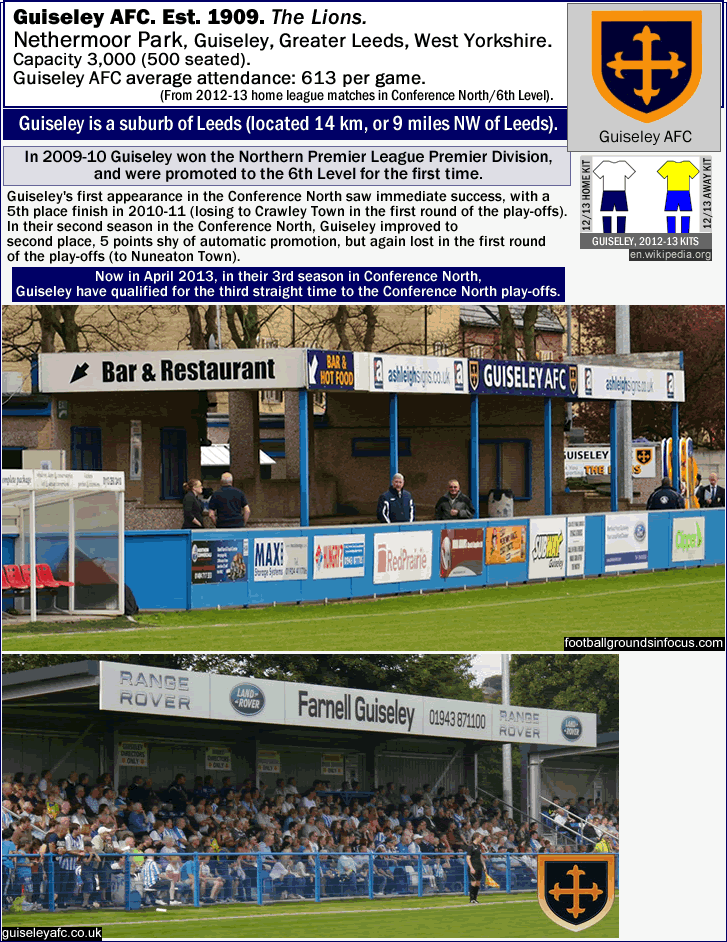
Photo and Image credits above -
Guiseley A.F.C.‘ (en.wikipedia.org).
footballgroundsinfocus.com.
guiseleyafc.co.uk.
…
Brackley Town FC.

Photo and Image credits above –
‘Brackley Town F.C.‘ (en.wikipedia.org).
Unattributed at tottonstags.blogspot.com.
…
Altrincham FC.

Photo and Image credits above -
‘Altrincham F.C.‘ (en.wikipedia.org).
dubsteps.blogspot.com/2005/02/altrincham-1-barrow-0.html.
…
FC Halifax Town.

Photo and Image credits above -
‘F.C. Halifax Town‘ (en.wikipedia.org/wik).
thedribblingcode.wordpress.com/2011/04/27/tue-19-april-2011-fc-halifax-town-v-frickley-athletic-npl-prem/.
___
Thanks to soccerway.com for attendance figures, http://int.soccerway.com/national/england/conference-n–s/20122013/north/.
Thanks to Statto.com for Halifax Town AFC League history, statto.com/football/teams/halifax-town/history/modern.
Thanks to http://evostikleague.pitchero.com/archive-737/ for Chester FC attendance figure (2011-12).
Thanks to http://www.southern-football-league.co.uk/ for Brackley Town attendance figure (2011-12).
